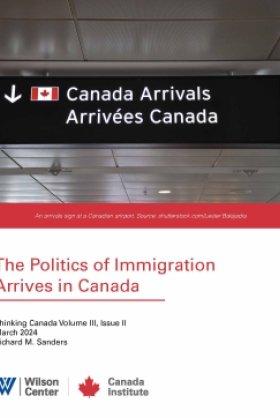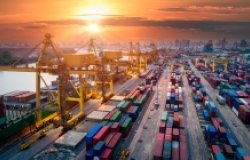<b>New Scholarship in Race and Ethnicity</b><br> American Civic Institutions and Political Mobilization among Asian-American and Latino Immigrants
Overview
One out of every five Americans today is an immigrant or the child of immigrants. Together, Asian-Americans and Latinos make up 75% of the immigrant population: approximately one in four immigrants is Asian and one in two is Latino. Yet today's political parties have shown a marked disinterest in mobilizing those populations.
That was the theme of Prof. Janelle Wong's presentation in the seventh program in the Division of U.S. Studies' series on new scholarship in race and ethnicity. Where parties in the period of the late 1860s through the early twentieth century saw it to their advantage to mobilize white European immigrants, she told an audience of scholars and activists, parties today rely on highly selective mobilization strategies. The parties have been nationalized and professionalized and prefer to target their resources at the wealthier, more centrist citizens who are most likely to vote. They assume both that immigrant populations are politically apathetic and that it would be dangerous to the parties' base of white voters to be seen as concerned about non-white immigrants' interests. In addition, they concentrate on swing states, where 40% of the white voters but only 20% of Asian and Latino voters live.
Today's parties emphasize marketing rather than policies, Prof. Wong continued. The 2004 presidential campaign, for example, did not offer specifics about the policy areas that polls have shown are most important to Asian-American and Latino voters: education, health, and jobs. While both presidential conventions included Spanish speakers and the parties did invest in Spanish media outlets, the attention they paid to Latino voters was largely confined to the airwaves – a marked difference from the personal attention of the late 19th and early 20th centuries. Other immigrant groups, including Asian-Americans, received even less attention.
Recognizing that during the 2004 election the national parties spent little time on all voters outside of the swing states, Prof. Wong asked what that makes of the role of parties in the United States today and how we ought to address the parties' failure to mobilize immigrants and help incorporate them into the American political system.
Prof. Jones-Correa agreed with Wong's findings but suggested that the image of a past Golden Age in which the parties mobilized all newcomers for political participation may not be entirely correct. "People were mobilized through specific incentives," he commented, with patronage constituting a major part of those incentives. The parties manipulated the electoral system for their own advantage. There was no secret ballot throughout much of the 19th century and ballots were prepared by each party, which had a visible monitoring presence at the voting place. Citizenship papers were filed not with the federal government but with state and local courts, which were controlled by local parties and could send new citizens directly to the polls – where they were told how to vote. This, he argued, was the kind of "coercive mobilization" that reforms of the political system were designed to negate and that we would not want to see today.
When, Prof. Jones-Correa asked, do parties mobilize voters? It is not only immigrant voters who are being ignored today; as the 2004 presidential campaign demonstrated, it is most voters. Parties seek a context in which they will win all the time, so that mobilization of new voters becomes unnecessary, and the kind of gerrymandered districts that exist in the United States mean that many state and local parties do have monopolies. "We do not have a functioning two party system," he asserted, when more than 90% of congressional seats are non-competitive once the primaries are over. The Electoral College leads parties to invest selectively, concentrating their efforts in the few places – the swing states – where there is meaningful competition. Contemporary measures such as campaign finance reforms increase competition between parties but do little to activate more of the public politically.
Prof. Mollenkopf urged that politics at the local level be factored into the equation, because that is where competition does exist in, for example, mayoralty campaigns, and where minority voters are therefore targeted by the parties. Local campaigns are the "greenhouses of political development," giving many new voters their first experience of political participation and producing many politicians who will later run for national office. This was the case in the 19th and early 20th centuries, when immigrants were routinely socialized through local political races. Audience members pointed to current examples that include newly-elected Vietnamese office-holders. The panelists disagreed about the extent to which term limits increase real competition in political campaigns but they all agreed that another round of reforms – of the system of apportioning districts and of the Electoral College – will be necessary if potential voters are to become fully mobilized in the American political process.
To read Janelle Wong's paper, please click here.
Philippa Strum, Director of U.S. Studies (202) 691-4129
Thank you for your interest in this event. Please send any feedback or questions to our Events staff.










